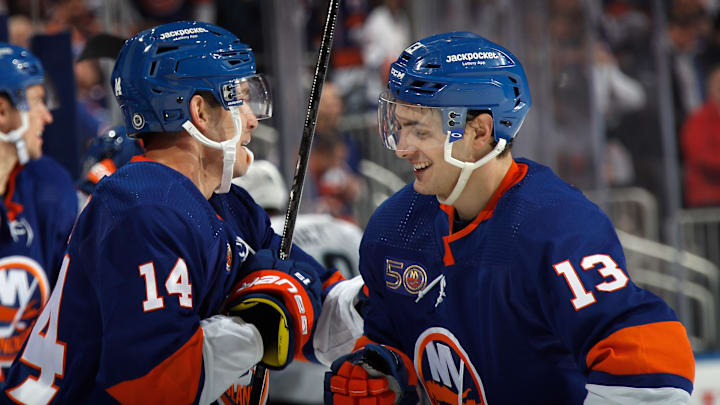MINUS
You already know what I'm going to say next. After Barzal got hurt, Horvat's production fell off a cliff. After 31 goals in 49 games with Vancouver, he added just seven in 30 games with the Islanders. At the time of the trade, Horvat was on pace to score 52 goals and 90 points, but he actually finished with just 38 goals and 70 points.
Horvat was also expensive in two different senses. First, he cost the Islanders a lot to acquire. Anthony Beauvillier was largely expendable with Horvat's arrival, and fans had mostly grown frustrated with his inconsistency anyway, but losing Aatu Räty, the most exciting prospect the team has had in several years, and a first round pick (which would up being 17th overall, and used by the Canucks on dynamic defenseman Axel Sandin Pellikka) is a price that's only worth it for an elite talent. At the time of the trade, it looked like the Islanders were getting one. Now, they're a lot less sure.
Also, and more importantly, $8.5 million is a lot of money. It's not fair to compare him to Leon Draisaitl, Sebastian Aho, or Steven Stamkos, whose AAVs are all 8.5 (or, for Aho, just slightly less), because their contracts expire soon, and they'll be getting massive raises. But Horvat makes about as much as Pierre-Luc Dubois, Roope Hintz, and Dylan Larkin. He's better than all three of those players if he can reach, or even come close to, the 52-goal pace consistently - but if not, that contract has the potential to be a disaster.
But even though this is supposed to be the "minus" section, I'm going to end on a positive note. Generally speaking, a player's shooting percentage stays roughly the same throughout his career. It can improve if he improves his shot, of course, but for the most part, large and rapid swings in shooting percentage tend to even out over time, in what's known as "regression to the mean".
Why am I talking about this? Horvat's shooting percentage over the past five years (not including this season) was 13.6%. In that time, it never went above 16% or below 11.9% for a season. Last season, before the trade, it was an unsustainably high 21.7% - meaning he was getting lucky, and couldn't be expected to sustain that permanently.
But after the trade, his percentage fell to an absolutely appalling 8.1%. That sounds bad - and it is - but it's a reason to be optimistic. Players don't just forget how to shoot overnight. Horvat was getting unreasonably lucky in Vancouver, but he was unreasonably unlucky with the Isles. That kind of thing will always even out. He probably won't score 52 goals next year, but I'd bet he hits 35.
